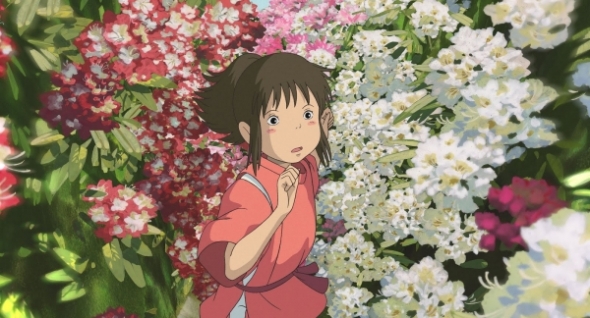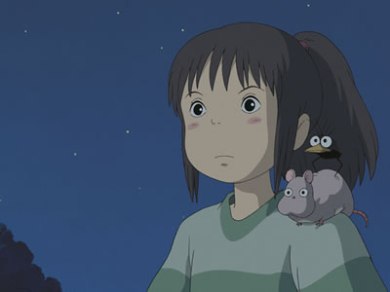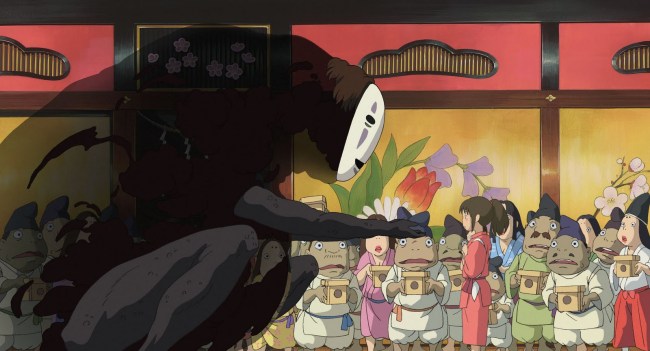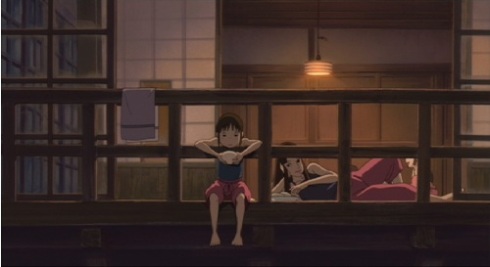There are many powerful concepts that can be found quite easily within Hayao Miyazaki’s wonderfully animated and brilliant film, Spirited Away (2001), which follows ten-year-old Chihiro/Sen on her quest through the spirit world to save her parents and help her new friends. The theme that stands out from the rest is the search for identity, which can be found in the owning and taking of names, the repetition and echoing of people (doppelgängers), the outcasts, and transformations of the self – in appearance and personality – that are riddled throughout the entire film. It’s through these elements, and the determined protagonist Chihiro/Sen, in this film that Miyazaki stresses the dire importance of searching for one’s true identity.
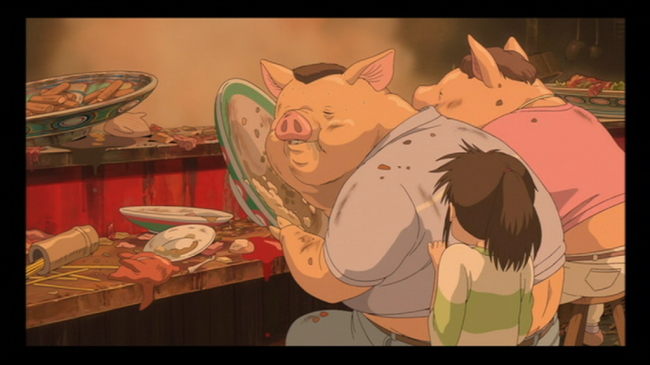
The first instance of transformation comes very early on in the film, and is the reason for Chihiro’s need to remain in the spirit world – her parents turning into gorged and bulging pigs. It’s beyond obvious here that the symbolism refers to their greed, something that was already present and echoed in her father’s fat body before the change. The enlargement of bodies symbolic of greed and gluttony can also be seen in the character of Yubaba, whose head is severely engorged, putting forth a literal representation of her ‘big head’ or ego alongside her immense wealth and greed for more. Her identical twin sister, Zeniba, also carries these physical traits but is self-professedly “the complete opposite” to her – though her greed can be seen through the zealous and ruthless chasing of her magical solid gold seal. It can be said that her large head takes the form of her abundance of goodness and kindness, in opposition to Yubaba. Transformation, as a form of literal representation of traits, is also exhibited by the spirit initially thought to be a stink spirit, then proved to be a wealth river spirit, who was removed of all his pollution and debris to be cleansed back into his original purity and his natural state by Chihiro. The giant baby and the vulture with Yubaba’s face both transform into smaller and completely harmless and silent animals – a fat mouse and a pea-sized bird – a personal transformation as well as a physical one, both signifying their change in personality and demeanour, and their wish to be free of Yubaba’s continuous somewhat tyrannous rule.
Most important and relevant to Sen is No-Face – a non-descript, monochromatic appearing, voiceless and virtually featureless spirit. No-Face, once let into the bathhouse by Sen, begins attempting to bestow objects upon Sen, and later whoever can give him food, in an attempt to make the others like him and want him around. His transformation is slow as he slowly becomes maddened, eating the frog and the foreman in a fit. Interestingly, as No-Face seems to have no identifying qualities or attributes, he takes on those of which he eats – he adopts the frog’s general body shape and voice, and bulges grotesquely, as he engulfs more and more food. Grotesque though he may be, it is begun so clearly from loneliness and a wish to be accepted, a feeling established with Sen also, as she is the human, constantly pointed at and ostracized by all but Lin, Haku and now No-Face. His importance to Sen is through their positions as outcasts within this world they are both a part yet excluded from, connecting them deeply through this intangible bond of experience.
This bond through their role as pariah creates a repetition of sorts – of outcast and outcast – which joins them together, makes their differences and bonds stronger. Repetition is also found with the appearances of Yubaba and Zeniba, who are twin sisters, both with gloriously large heads, the same costume and jewelry, and strong magical powers. The duplication of these two creates a conversation and between the evil and good in the world, emphasising the dichotomy and showing that only a very fine line separates them. But, within this motif of repetition, it is Lin, Sen’s mentor and guiding friend, who is the most striking doppelgänger, as she resembles an older Sen – stronger, more resilient, and capable. This could be a distant echo of the life Sen would lead if she did not manage to escape the spirit world – one that finds its pleasures in gold and roasted newts.
With all these elements that contribute to Chihiro & Co.’s search for identity said, there is still one part left – the name. When Chihiro is contracted to work by Yubaba, she signs away her name in the most literal manner. Yubaba owns the name, and takes away part of it, leaving only ‘Sen’ behind. Sen is ultimately just a part of Chihiro, a facet, and this makes her struggle even harder. Her identity is locked within the parts of her that live in the human world – her parents, her friends, her name – and she must retain it all, if she wants to leave. Haku has suffered the fate they both try to keep Chihiro away from – the forgetting of his name, and thus the key to his identity – and it makes him capable of Yubaba’s wrongdoing. Haku is only a facet of Kohaku, the spirit of the Kohaku River. It’s poignant and moving that both of these characters find their names.
Through these four elements – repetition, transformation, representation and the name – this film, Spirited Away, creates a deep dialogue with the audience. By captivating our attention on the little details – when two people look the same, or similar – to notice what it is that is different and worth noticing. Chihiro’s search for her identity is marked by these elements, in the taking and changing of her name, her connection as outcast with No-Face, her echoed future self in Lin, and her gradual transformation throughout the entire film – from a spoilt little girl of ten, to the capable and independent Chihiro who saved her friend and parents, and has kept her identity.
Bibliography
Cooper, D. (2010). Finding the Spirit Within: A Critical Analysis of Film Techniques in “Spirited Away”. Babel , 45 (1), 30-37.
Miyazaki, H. (Director). (2001). Spirited Away [Motion Picture].
